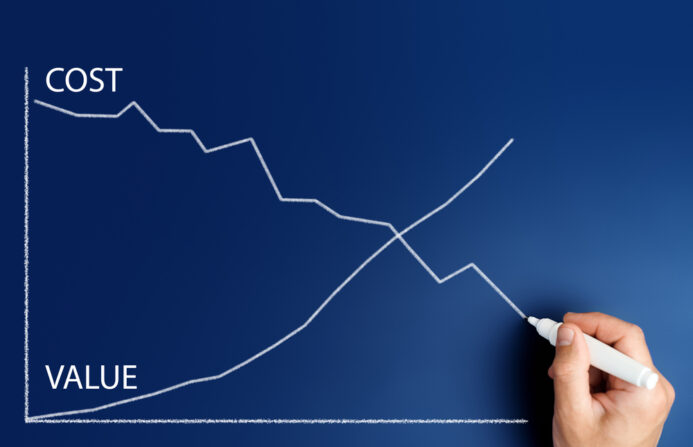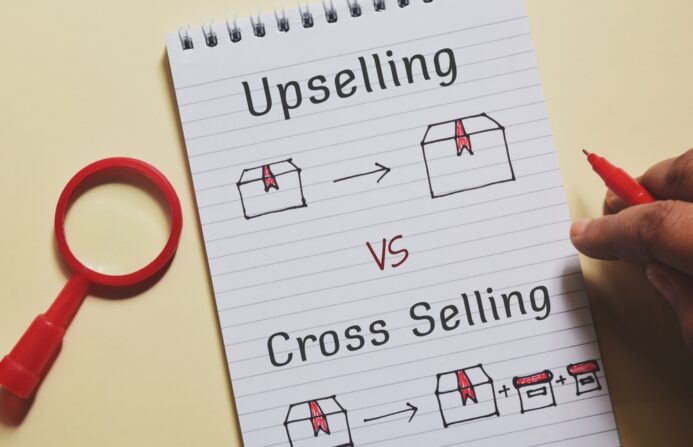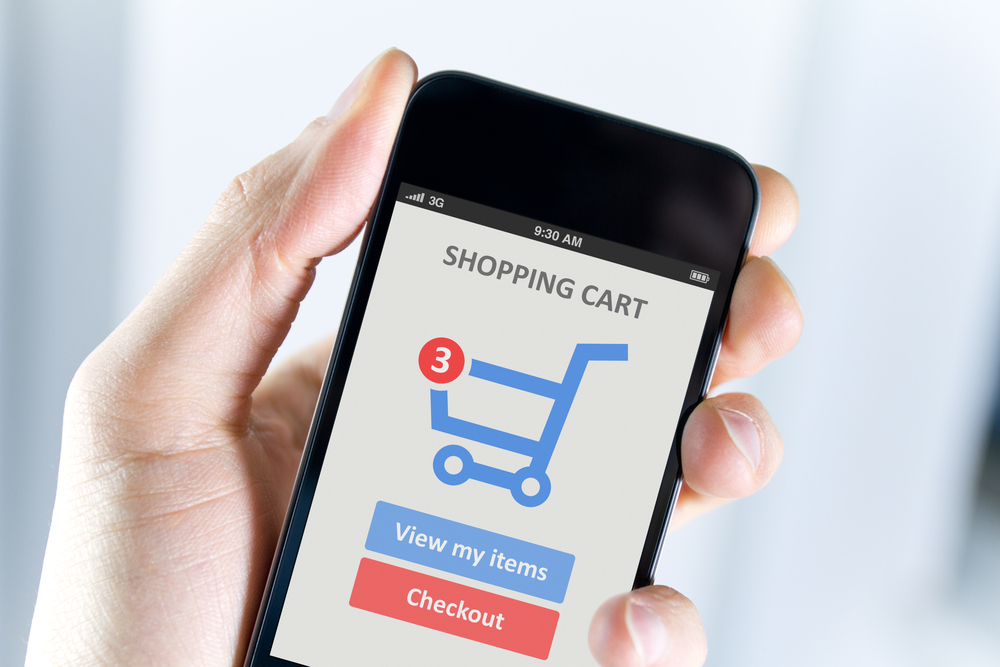There’s no way around it – attracting new customers to your ecommerce store can be expensive. For small and early-stage online retailers, customer acquisition costs can be especially unnerving. In some industries, they run into the hundreds of dollars per customer.
If you’re spending money bringing new customers into your fold, it’s worth having strategies aimed at maximizing their value.
Developing a strong loyalty program for existing customers is a big part of this. However, you should also aim to increase average order value – the amount your customers actually spend at checkout.
In this article, we’ll introduce the concept of average order value and explain why it matters. Then, we’ll take you through five simple strategies to start boosting your customers’ cart size.
Calculating average order value
Average order value is the average dollar amount your customers spend per transaction. If your online store uses an ecommerce solution with analytics tools, you’ll likely be able to view your average order value there.
Alternatively, you can calculate average order value yourself by dividing your revenue by the total number of orders placed over a given period. So, if your store made $5000 in revenue last month across 50 orders, your average order value is $100.
Bear in mind that averages don’t always give you perfect insight. For instance, there might be months when your store receives a couple of unusually high-value orders. This can skew your average order value.
As you start striving for a higher average order value, make sure to take outliers like these into account. Focus on overarching trends, not month-to-month snapshots.
Why is average order value important?
Average order value may not be as prominent as other business metrics, such as those related to total revenue and customer acquisition. Nevertheless, tracking and improving it is crucial to your business’s sustainable growth.
Higher profits – Average order value relates directly to your company’s revenue and profitability. By increasing the average amount customers spend in a single transaction, you can achieve higher revenue without necessarily spending more on attracting additional customers.
Improved Customer Lifetime Value (CLV) – Customers who spend more per order are likely to be more loyal. They represent an opportunity for long-term relationships and repeat business, increasing the overall lifetime value of each customer.
Economies of scale – Larger orders often come with lower per-unit fulfillment costs. In other words, as you increase average order value, you can also optimize your operations and increase overall profitability.

Faster growth – Average order value directly impacts your top-line growth. When your customers are consistently spending more, your business can expand faster and compete more effectively in the market.
Additionally, keeping track of your average order value provides valuable insights into customer behavior. By understanding the purchasing habits of your customers, you can tailor your marketing strategies, product offerings, and pricing models to maximize profitability.
For instance, if you know that customers tend to buy more when offered a discount or bundled deal, you can base more of your promotions on these concepts.
3 strategies to increase average order value
These three strategies are among the most effective ways to increase average order value. For each strategy, we’ve included business characteristics that are likely to make it a good fit, along with practical tips for getting started.
Free shipping threshold
Offer free shipping for customers who spend a minimum amount. The free shipping threshold is a tried-and-true way to increase average order value.
In fact, a 2023 study showed that 47% of customers are willing to spend more to meet a minimum free shipping threshold.
It's a good fit if...
You have a diverse product catalogue – If customers can shop around for a variety of products at different price points, they’re more likely to add to their carts.
You sell gifting items or seasonal products – Setting free shipping thresholds during peak shopping seasons can entice customers to combine several gifts into a single order.
You offer subscription-based services – Businesses providing subscription-based services, such as meal kits or beauty products, can benefit from free shipping thresholds. They encourage customers to commit to longer subscription periods or purchase more items upfront.
How to do it
Make sure your threshold is slightly higher than your average order value, but not so high that customers feel discouraged.
Consider your profit margins, too . Free shipping is an expense for your business, and you don’t want to end up losing money on every qualifying order.
Once you’ve settled on your free shipping threshold, communicate it clearly and enthusiastically on your website. Highlight how much customers will save on shipping by reaching the threshold (without being too negative about regular shipping costs, of course!).
Consider adding a “You’re only $_ away from free shipping!” feature to your cart and checkout pages. This is an effective way to encourage customers to spend a little bit more.
Cross-selling and upselling

Product recommendations can increase average order value by introducing customers to complementary (cross-sells) or higher-value (upsells) items they might have overlooked.
The most effective product recommendations are not only based on product data; they’re also personalized for each customer, factoring in their shopping and browsing history.
For example, an online apparel store might show customers recommendations based on styles or designers they’ve bought frequently in the past.
Strategically placed product recommendations can be an effective way to bump up the quantity or value of items in your customer’s cart.
It's a good fit if...
You have a large product catalogue – If you sell a wide range of products, recommendations can be an effective way to help customers find their way to items that interest them.
You sell specialty products – Help customers become familiar with specialty or niche products by recommending those that work together, or those with similar characteristics (“If you liked this, you’ll love that!”).
You serve a diverse customer base – If your customers span a wide range of demographic backgrounds, experience levels, or interests, use recommendations to help keep their shopping experience relevant.
How to do it
A common way to share product recommendations with customers is by adding “recommended product” widgets to your site.
Display upsells and cross-sells on product pages and customer account pages (e.g. wish lists). Cross-sells also work well on the Cart page, showing items complementary to those already in the customer’s cart – and enticing them to buy more just as they’re about to purchase.
An even more personal way of sharing recommendations is via live chat. If you use ChatSO as your live chat engine, you can track who’s looking at your site, which page they’ve viewed, and any available data on their past shopping behaviour.
Drawing on this information, send the customer a prompt with a personal recommendation for a product likely to interest them. You might even choose to sweeten the deal by throwing in a unique discount code for the product(s) in question.
Discounts and incentives
Try structuring discounts and promotions to encourage customers to purchase more. Think of “Buy one, get one half off”, discounted product bundling, or a free gift with a minimum spend.
It's a good fit if...
You have excess inventory – If you need to move a lot of stock quickly, consider promotions designed to boost purchase volume. These can increase average order value while simultaneously solving your storage and cash flow problems.
You cater to seasonal trends and holidays – Retailers that cater to big shopping holidays or events can use discounts and incentives to capitalize on these occasions. For example, back-to-school sales, Black Friday discounts, and holiday promotions can stimulate larger purchases.
You have frequent shoppers – Retailers with a customer base that shops frequently can leverage discounts and incentives to encourage higher-value purchases. Loyalty programs, frequent shopper discounts, and exclusive member benefits can all help you increase average order value.
How to do it
There are several ways to structure your discounts and incentives to increase average order value.
Volume-based discounts encourage customers to buy more. Common types include:
“Buy more, save more” discounts
“Buy two, get one free” or variations of that model
Discounts on bundles of complementary products
Alternatively, consider discount thresholds. This may mean customers must spend a certain amount (slightly more than your average order value) to get a percentage off their purchase or get a free gift.
To maximize the impact of your promotion, try to involve an element of personalization. Segment your customers and craft a discount that will resonate with each group. For example, loyal customers might appreciate exclusive offers, such as “Thank You” discounts or early access to sales events.
New customers, meanwhile, might respond to first-time purchase discounts. Volume-based discounts that reward larger orders may be best suited to frequent shoppers.
By structuring your promotions based on knowledge of customer behavior, you can give your customers a sense of individualized value and encourage them to spend more to take advantage of personalized incentives.
Whichever structure you choose, make sure it’s easy to understand and clearly communicated. Vague terms and conditions can deter customers through poor experiences.
Start your journey to a higher average order value

With its direct impact on total revenue and business growth, average order value is a particularly important metric for online retailers.
A higher average order value translates to increased revenue, improved CLV, cost savings, and faster overall growth.
The five strategies outlined in this article are versatile tools that you can adapt to the needs of your ecommerce store. By experimenting and tailoring these approaches, you can boost customer spending significantly while providing enhanced shopping experiences.

